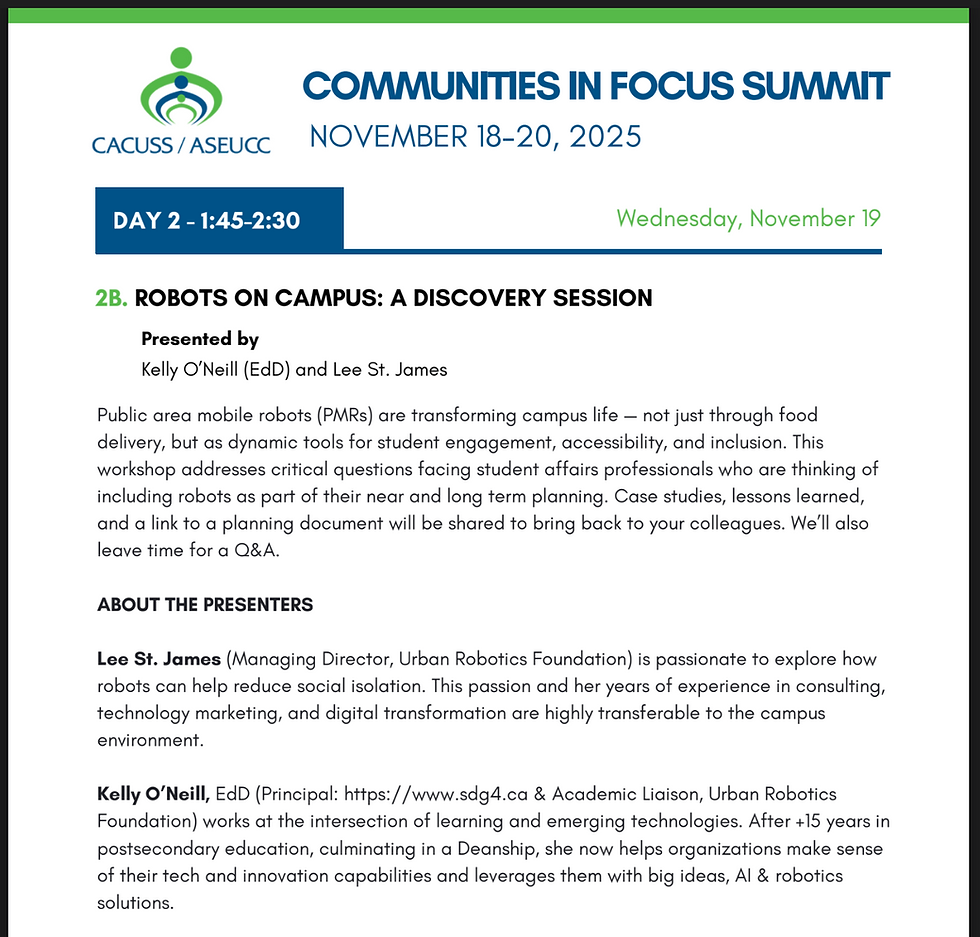Ready or Not? Robots are Coming
- Apr 11, 2023
- 2 min read
Announcing a new Webinar: Readiness for Public-area Mobile Robots (PMRs) April 25, 2023 (12noon ET, 9am PT, 5pm GMT)
Are you ready for robots in your city or region? Most of us are familiar with the idea of small delivery robots for last-mile food or groceries or perhaps a security-surveillance robot monitoring a public area. Some of us have seen them in operation. Worldwide there are already several hundred companies developing these devices.
Innovations, applications, and start-ups are added daily enabled by the fusion of numerous technologies spanning mapping, sensors, increasingly capable mechatronics, IoT, tiny electric motors, and intelligent spatial navigation software. A growing portion of these companies are receiving significant investment and their products are being commercialized.
BEING PREPARED:
It is as hard to overestimate how much potential such robots have, as it is difficult to exaggerate the importance of preparing our regulatory and governance landscape. The harnessing of mobility automation follows in importance only after the wheel, domestication of animals for work, and the steam engine — each a monstrous multiplier of the previous innovation. These innovations enabled, then changed, cities. So too, will public-area mobile robots.
There is a wide spectrum of opinions concerning the advantages and challenges of recent urban mobility innovations such as car sharing, ride hailing, bike sharing, e-scooters, or free transit. The pros and cons of mobile robotics will inherit the excitement and rancour of every mobility innovation since the scaling of the smart phone.
But automation has the potential to be far more impactful — both positive and negative — than all of these combined. Our work at the Urban Robotics Foundation focuses on the regulatory, behavioural, and orchestration standards necessary to make most of these impacts positive and to dull the negative impacts.
YES or NO? WHEN? WHERE? and HOW?
If you are a city, the only way to avoid this conversation is to ban public-area mobile robots (ISO refers to them as PMRs). You may be able to do this for a short time, while these devices are still immature, barely capable, plainly primitive. Like the Wright Flyer. But that time is already far more than half used up.
URF has developed the "6 Pillars of Deployment" as foundations of governance for PMRs. You can learn more about these pillars and join our municipal, commercial, and accessibility members on this journey by attending our introductory webinar. The journey involves standardization, shared regulatory exploration, enhanced accessibility, pedestrian safety, traffic orchestration, respectful distancing behaviours, monetization, and formalization of rules for automated devices engaging in pedestrian spaces.
Our introductory webinar is free. If you are a member, invite your colleagues. If you are not already a member, we invite you to "zoom in" and find out more on April 25th (12noon ET/9am PT/5pm GMT).
Register here:





Comments